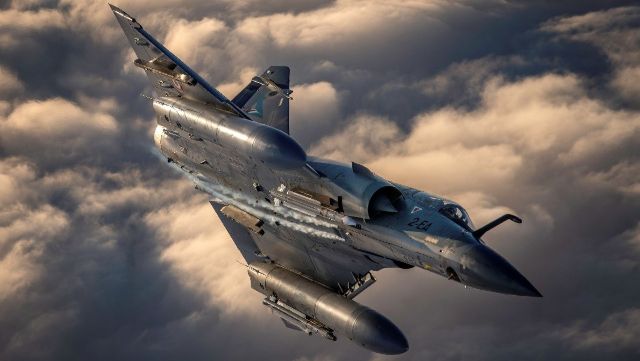Eyewitness reports India’s 10-15 missile hit on a single target - Agency Report
Eyewitness reports India’s 10-15 missile hit on a single target - Agency Report

The operation, dubbed “Operation Sindoor,” saw 10 to 15 missiles converge on a single target in Muzaffarabad, the capital of Pakistan-administered Kashmir, destroying a mosque and adjacent structures, including a madrasa.
The strikes, which India claims were aimed at dismantling terror camps linked to the April 22 Pahalgam attack that killed 26 civilians, have ignited fierce debate, with Pakistan labeling the action a “blatant act of war” and reporting civilian casualties.
As global leaders urge restraint and airspace disruptions ripple across the region, the precision and scale of India’s attack underscore a new chapter in the volatile India-Pakistan rivalry.
The strikes centered on the Shawai Nallah Camp, also known as Bait-ul-Mujahideen, located along the Muzaffarabad-Neelum Road, a facility India alleges is a key training ground for Lashkar-e-Taiba [LeT], a militant group responsible for the 2008 Mumbai attacks.
Reuters reported that local resident Ahmed Abbasi witnessed the barrage, stating, “Suddenly, shelling started. I think about 10 to 15 missiles hit here.”
The attack, executed around 1:30 a.m. local time, caused significant damage, with power outages reported across Muzaffarabad and explosions echoing through the surrounding mountains.
Pakistan’s military spokesperson, Lt. Gen. Ahmed Sharif Chaudhry, confirmed the strikes, noting 24 impacts across multiple locations, including Kotli, Bahawalpur, and Muridke, in a press conference at 4:08 a.m. on Wednesday, as reported by Dawn newspaper.
The precision of delivering such a concentrated salvo of missiles to a single point is a feat of extraordinary technical and tactical complexity. Coordinating multiple missiles to strike within a confined area requires advanced guidance systems, likely a combination of satellite-based navigation and inertial guidance, to ensure each projectile follows a precise trajectory.
The rugged Himalayan terrain of Kashmir, with its steep peaks and deep valleys, poses significant challenges, as mountains can disrupt GPS signals and obscure sensor visibility. Weather conditions, such as high winds or fog, further complicate accuracy, demanding real-time adjustments to missile paths.
Pakistan’s air defenses, including radar networks and surface-to-air missile systems, add another layer of difficulty, potentially requiring India to employ electronic countermeasures or low-altitude flight paths to evade detection.
The operation’s success suggests meticulous planning, underpinned by intelligence gathered from satellites, drones, or human sources, and seamless coordination among India’s army, air force, and navy.
The Indian armed forces described the strikes as a calibrated response to the April 22 Pahalgam attack, where 26 civilians, mostly Hindu tourists, were killed in a militant assault in Indian-administered Kashmir. India attributes the attack to LeT operatives based in Pakistan, a charge Islamabad denies.
The Indian Army’s official X account posted a video hours before the strikes, showcasing tanks, ammunition, and the caption, “Ready to strike, trained to win,” signaling the operation’s intent.
Sources cited by ANI news agency confirmed that precision strike systems, including loitering munitions, were deployed to target nine terror camps across Pakistan and Pakistan-occupied Kashmir, with the Muzaffarabad strike being the most prominent.
Loitering munitions often referred to as “suicide drones,” are advanced weapons capable of lingering over a target area before striking with pinpoint accuracy, offering flexibility in dynamic combat environments.
Pakistan’s response was swift and unequivocal. Lt. Gen. Chaudhry reported that the strikes killed at least eight people, including a child, and injured 35 others, with the Bilal Mosque in Muzaffarabad among the destroyed structures.
Pakistan’s Prime Minister Shehbaz Sharif condemned the attack as an “act of war,” vowing retaliation, according to India.com. The Pakistani military claimed to have shot down five Indian fighter jets, a figure disputed by Reuters, which confirmed three Indian aircraft crashes.
The discrepancy highlights the fog of war, as both sides grapple with conflicting narratives. Pakistan’s air defense systems, which include Chinese-made HQ-16 and HQ-9 missiles, are designed to counter aerial threats, but their effectiveness against advanced Indian tactics remains under scrutiny.
The loss of Indian jets, if confirmed, would represent a significant blow to the Indian Air Force, which operates a mix of Sukhoi-30 MKI and Mirage-2000 fighters, both capable of delivering precision-guided munitions.
The international community reacted with a mix of concern and cautious diplomacy. U.S. President Donald Trump, speaking to reporters, called the conflict “a shame” and expressed hope for a quick resolution, as reported by NBC News.
The U.S., a key supplier of military equipment to India, including F-16 jets and Apache helicopters, treads a delicate line, balancing support for New Delhi with the need to prevent escalation. Iran’s Foreign Minister Abbas Araghchi offered to mediate, a move analysts see as an attempt to bolster Tehran’s regional influence, particularly given its ties to Pakistan.
China, a major economic partner of Pakistan through the China-Pakistan Economic Corridor, has remained notably restrained, with no official statement reported by Reuters as of Wednesday morning.
The United Nations, through Secretary-General António Guterres, warned of “tragic consequences” if the conflict spirals, echoing sentiments from April 30, when Pakistan first raised alarms about an imminent Indian strike, according to DW.

















